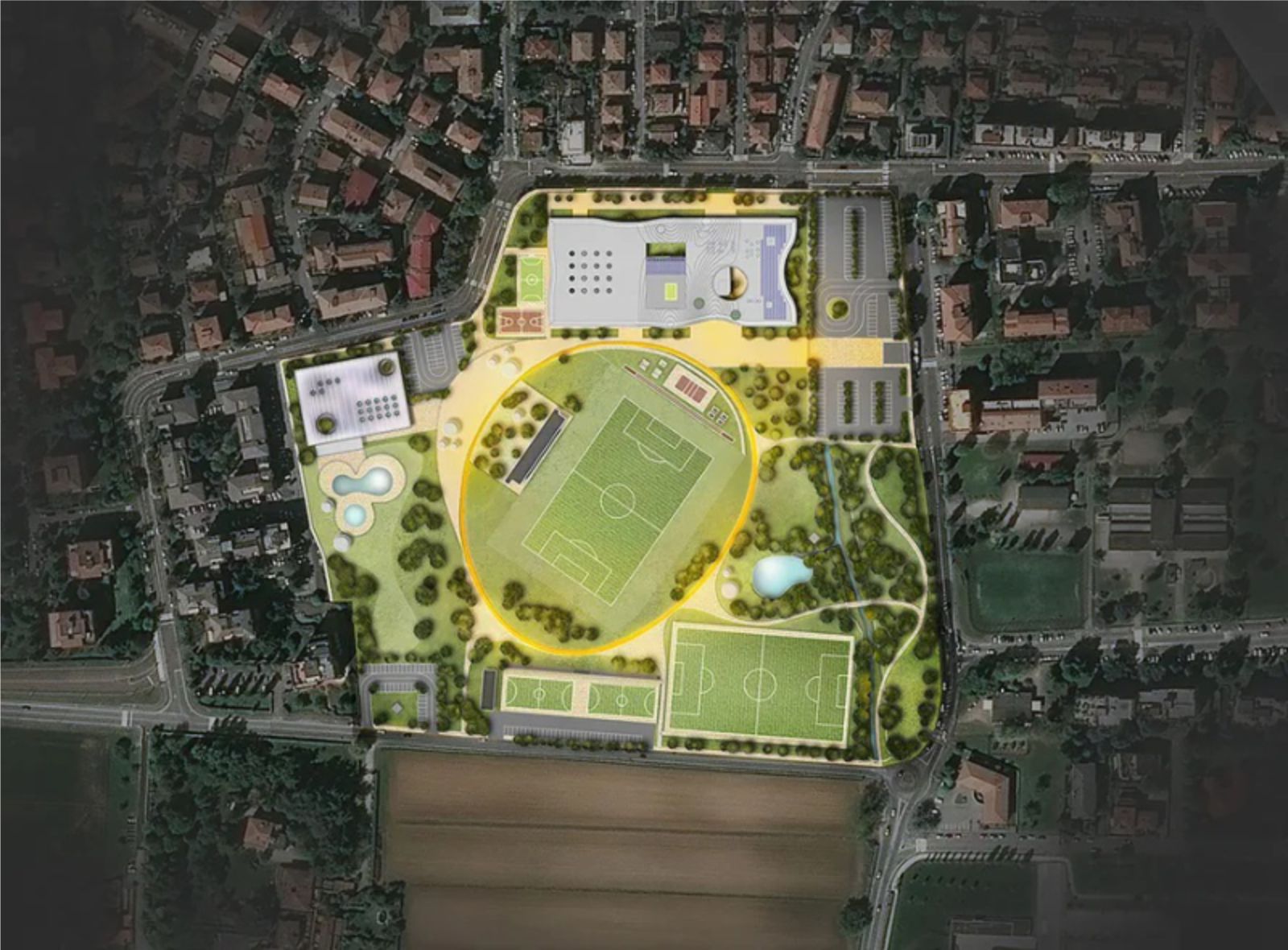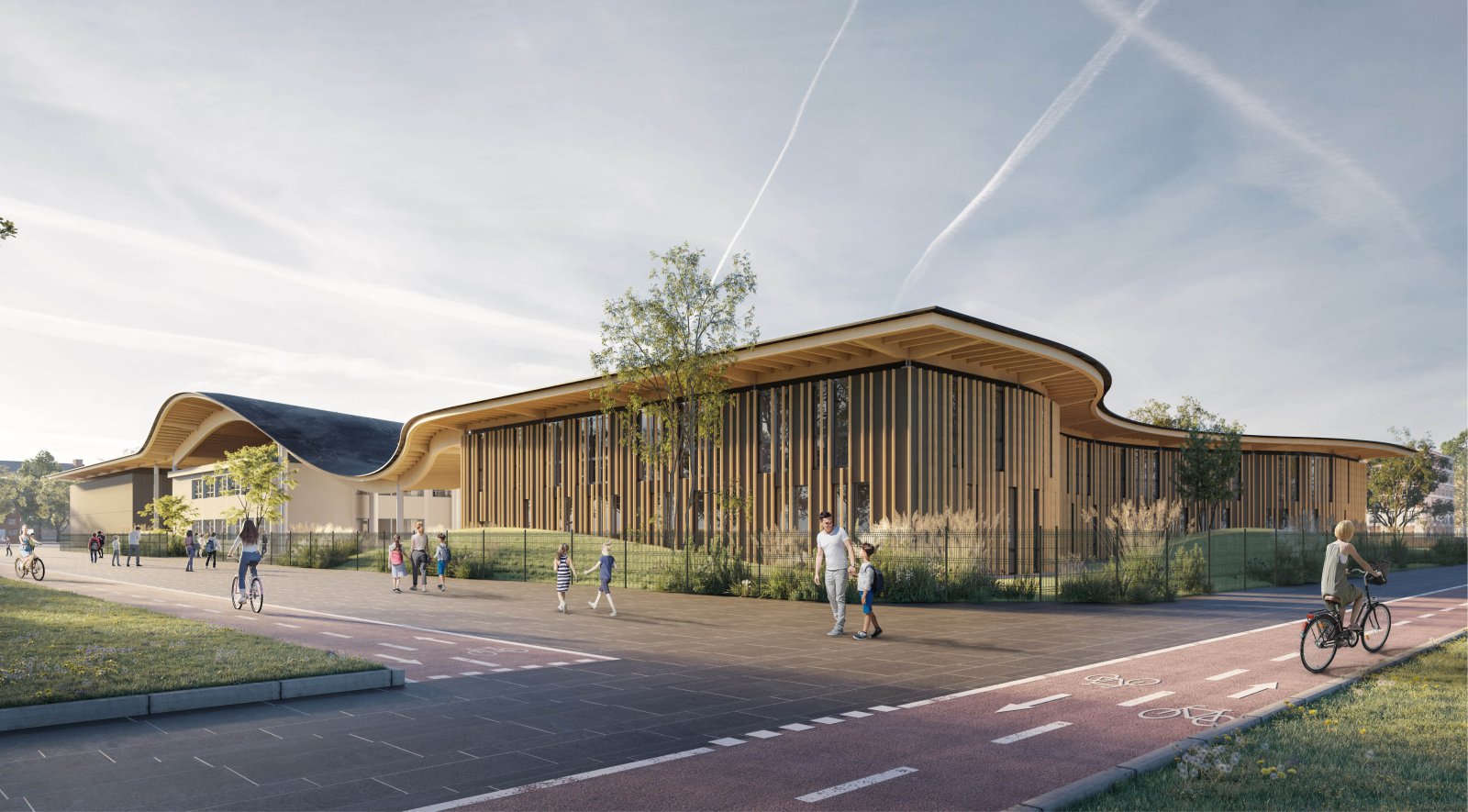The new Campus KID schools complex, an educational centre for children aged 6-14, is situated at the foot of the hills on the south-eastern boundary of the municipality of San Lazzaro di Savena (Bologna). This location makes it a significant element that connects the town of San Lazzaro with the surrounding area, and responds to the fragmentation of a locality where various types of services and buildings coexist.
The primary school (6-11 years old) has 20 classrooms, laboratories, and special classrooms, and can accommodate up to 500 children. The middle school (11-14 years old) reuses the existing building, which has 18 classrooms and laboratories; a later extension designed by MCA provides additional laboratories and music classrooms. The secondary school can accommodate up to 450 pupils.

Concept
The project uses high-quality architectural design to create a unified complex (schools, gymnasium, auditorium) that connects the new building to the existing urban and territorial system as a facility that is open to the community and that harmonises with the town park. This provides healthy outdoor and indoor spaces and makes the most of the potential that the site offers to improve environmental comfort.
This whilst minimising energy consumption and maximising the passive energy strategies in a building where the architecture integrates the building services with the structural and technological components, and can respond strategically so that upgrading and construction can be carried out over time, in stages.
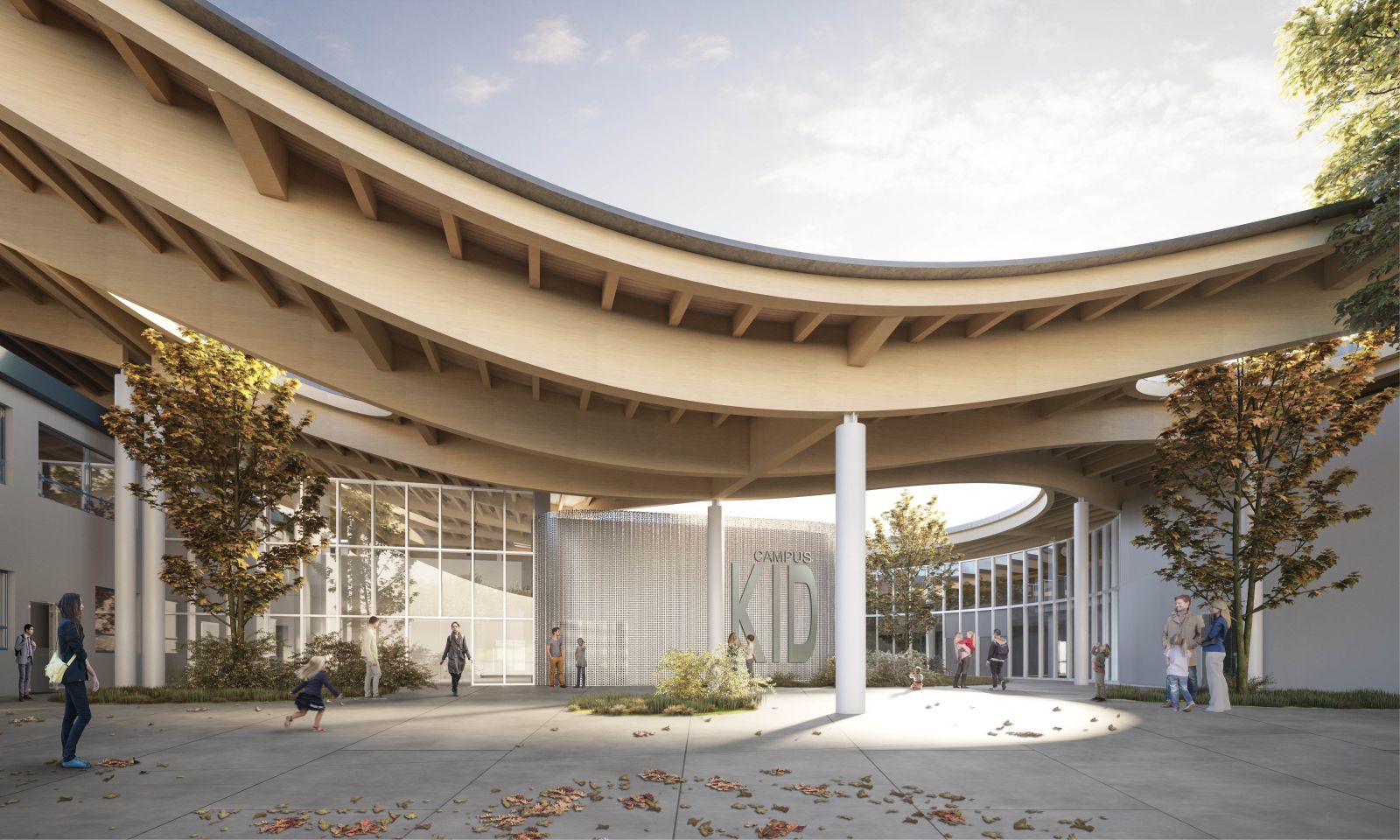
Comfort for children
Colours, light, dynamic and flexible spaces, courtyards, gardens, and contact with nature: these ingredients provide an ideally reassuring environment where younger children and middle school children can grow intellectually and physically.
The “suspended sheet”
The most strongly characterising element of the architecture is the large roof, whose strong formal presence adds strength and definition to the identity of the campus: suspended overhead like a protective sheet, it gathers together all the functions of the complex, creating continuity between all the different functional spaces and enabling them to work together in a complementary way as a unified entity that looks and feels like a single building.
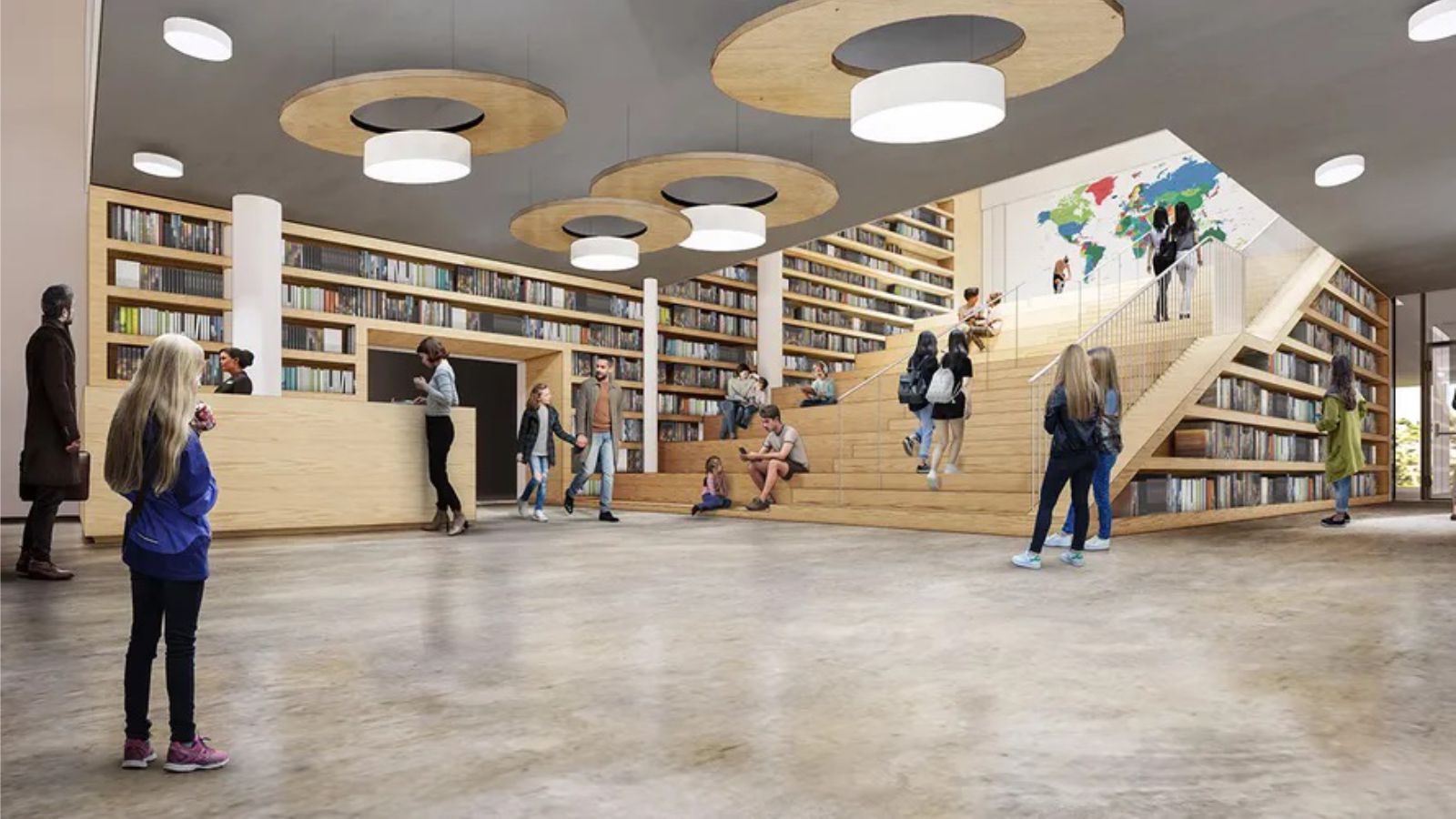
The Agora
The real focus is the large central Agora: a circular area that welcomes the children as they pass from the entrance and arrive into this contained, safe, open-air space. After hours when normal classes are over, the Agora can continue to serve as the main entrance to the spaces that are used by the community such as the auditorium, the dining hall, and the multifunctional classrooms (which can host activities like meetings for associations and extracurricular activities for the children).
The spaces
The two school buildings are organised to generate spaces where the child is ‘accompanied’ from primary school to secondary school on his or her personal growth path.

The layout of the complex does not generate corridors: the relational space is an inclusive and flexible space that embraces and integrates with the normal and special teaching environments, as well as with the common areas and those serving the community.
This configuration guarantees a differentiated offer of services and functions that is not limited to responding only to school activities. By managing the spaces in ways that adapt to the different types of users and the different times of day, the complex becomes a socio-cultural tool where the architecture itself is a vehicle of communication and knowledge for those who use it.
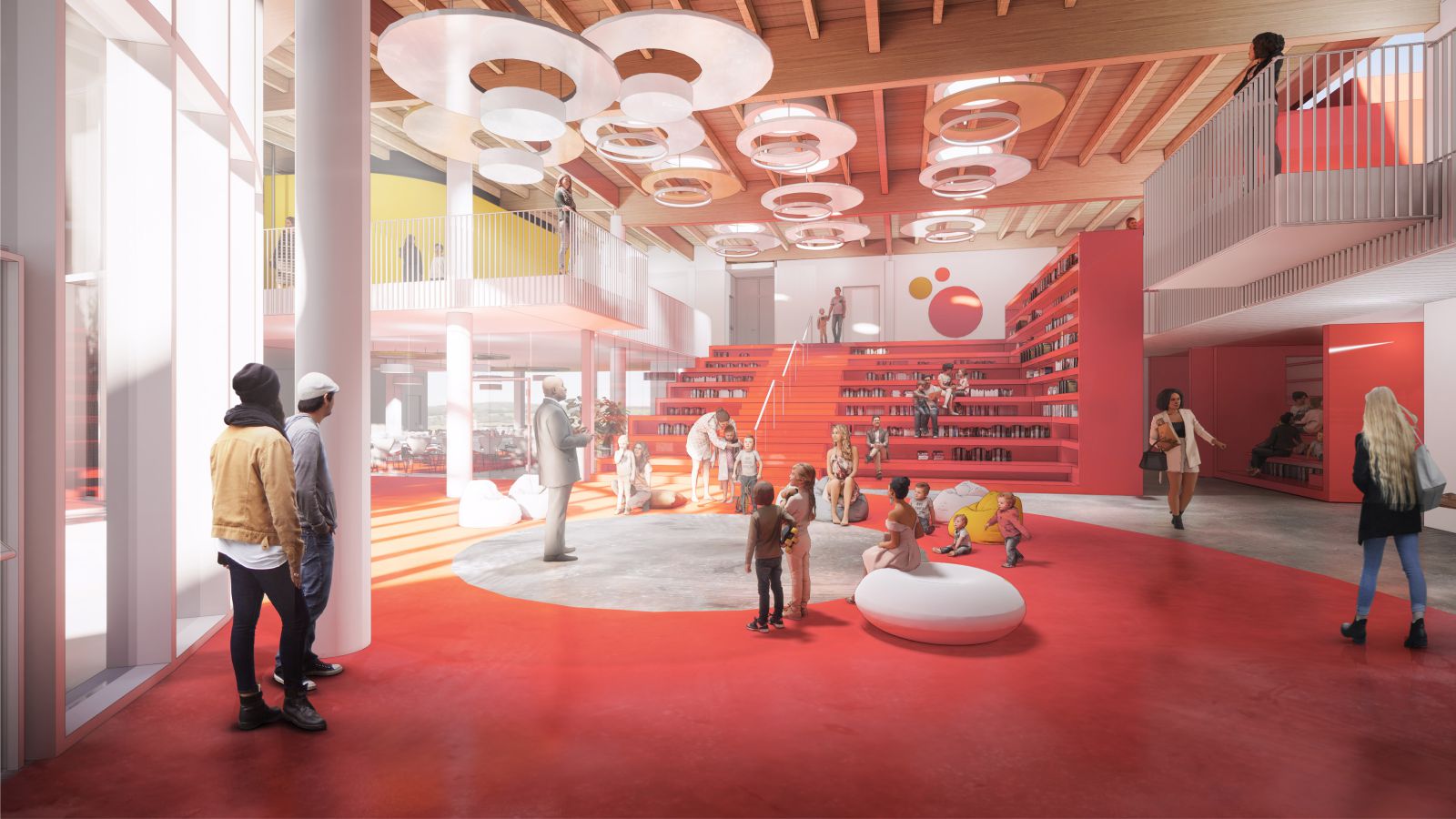
An architecture that offers new scenarios for teaching and learning
The design of the school spaces responds to the need to diversify teaching and the need to offer new scenarios for teaching and learning that refer to three fundamental elements, the first of which is relationship and sharing. The second foundational element is laboratory work.
The primary school stands out for the way in which it provides a dynamic intersection of thematic and multi-purpose workshop spaces and by a dialogue/interplay between indoor and outdoor places, which makes it particularly conducive to various exploration activities, individual and group study, and recreation: there is a library, an art lab, a multimedia lab, and a science lab.

The third element is polyvalence, which enables the different rooms to take on different and flexible connotations throughout the day and can therefore be used at any time to host different activities. Other characterising elements are the four music classrooms and, as an element that is independent from the rest of the school building, the auditorium.
The new spaces for sports are particularly important: the triple gymnasium is flexible and can be subdivided to create different types of play areas whilst the service areas (changing rooms, spectator bleachers, storage, and plantrooms) act as support for the sports activities. These facilities will be used not only by the pupils, but also outside school hours by local sports clubs. The main play areas will be validated by CONI (the Italian National Olympic Committee). Source and images Courtesy of Mario Cucinella Architects.
